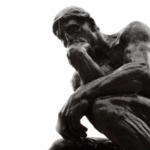The relationship between Buddhism’s concept of rebirth and its rejection of a permanent soul (atman) can seem paradoxical. How can something be reborn if there’s no enduring essence? Understanding this apparent contradiction requires delving into the nuances of Buddhist thought and appreciating its unique take on life, death, and existence.
Breaking Down the Concepts:
- Anatta (Non-Self): A cornerstone of Buddhist philosophy, anatta negates the idea of a fixed, unchanging self or soul. We are not static entities but dynamic processes, composed of five aggregates – physical form, sensations, perceptions, mental formations, and consciousness. These aggregates arise and cease in a continuous cycle, creating the illusion of a permanent self.
- Punarjanm (Rebirth): While Buddhism rejects an eternal soul, it accepts the concept of rebirth. This doesn’t involve the literal transfer of a soul but the continuity of karma, the law of cause and effect. Our actions (karma) create imprints on our mental continuum, shaping our future experiences. At death, these imprints lead to the formation of a new life based on past karmic tendencies, not the transfer of a soul.
Understanding the Process:
Imagine a candle flame. It appears constant, but it’s actually a continuous stream of burning wax. Similarly, according to Buddhism, we are like flames, fueled by the karmic momentum of our past actions. At death, the “flame” of our current existence extinguishes, but the karmic residue ignites a new “flame” – a new life shaped by past deeds.
Implications of Rebirth:
- Personal Responsibility: Accepting rebirth emphasizes personal responsibility for our actions. Knowing that our choices shape not just this life but future ones encourages ethical living and mindful choices.
- Breaking the Cycle: The ultimate goal in Buddhism is not endless rebirth but liberation from the karmic cycle. Through practices like meditation and cultivating compassion, we can weaken the hold of karma and achieve nirvana, a state of lasting peace and freedom from suffering.
Exploring Further:
If you’re interested in delving deeper into this fascinating topic, consider these authentic Buddhist books:
- “What the Buddha Taught” by Walpola Rahula: A clear and concise introduction to Buddhist teachings, including rebirth.
- “In the Buddha’s Words” by Bimal Krishnamurti: A compilation of the Buddha’s own words on key concepts like karma and rebirth.
- “The Tibetan Book of Living and Dying” by Sogyal Rinpoche: A practical guide to navigating death and rebirth from a Tibetan Buddhist perspective.
Remember: Understanding Buddhism’s nuanced view of rebirth requires an open mind and a willingness to challenge preconceived notions about the self and existence. By approaching this topic with curiosity and respect, you can gain valuable insights into the Buddhist worldview and its implications for living a meaningful life.
I hope this explanation clarifies the Buddhist concept of rebirth and provides helpful resources for further exploration. Remember, the journey of understanding Buddhist thought is a continuous one, so keep exploring, questioning, and deepening your knowledge of this rich and transformative philosophy.


